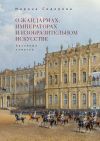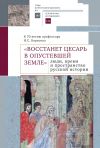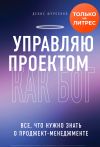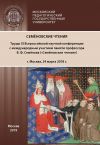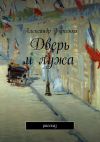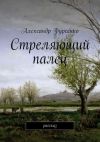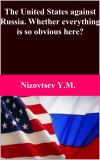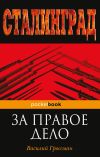
Автор книги: Сборник статей
Жанр: История, Наука и Образование
сообщить о неприемлемом содержимом
Текущая страница: 10 (всего у книги 33 страниц) [доступный отрывок для чтения: 11 страниц]
The one essay that attempts a definition of “pogrom”, giving it a single face, and applying it to all times and cases turns out to be the exception that proves the rule.[209]209
David Engel, “What’s in a Pogrom? European Jews in the Age of Violence”, Anti-Jewish Violence, p. 19–37.
[Закрыть] The definition worked out has the virtue of seeking circumstances beyond antisemitism as the causes of anti-Jewish violence. Yet it is so general as to yield only the palest explanatory potential, so broad as to be applicable not only to all anti-Jewish pogroms, but even beyond the parameters of Jewish experience, to other instances of “inter-communal violence”, as the author admits.[210]210
Ibid., p. 35. The richness and worth of the other essays in this volume lie in the degree to which they go beyond Engel’s formal definition.
[Закрыть] Although the impulse to seek wider and more general explanations is endemic to historical inquiry, the worth and creativity in these essays lie in demonstrating the protean nature of antisemitism, its adaptability to many forms of conflict and controversy, public and private, and the diverse, complex shapes that it has taken.
The larger methodological question this raises is the relationship between affect and action, between word and deed, between, in our context, antisemitism as ideology or attitude and pogroms. Those essays that fall in our period but outside Russia are sufficiently distinct to suggest some mid-level generalizations that both contrast with and illuminate the Russian situation. Let us begin with four essays treating anti-Jewish violence in Galicia, Moravia, and Croatia, all parts of the Austro-Hungarian Empire, plus Romania. In each case they occurred on a smaller scale in their numbers and destructiveness, compared to events in the Russian Pale in the same prewar decades.[211]211
Daniel Unowsky, “Local Violence, Regional Politics, and State Crisis: the 1989 Anti-Jewish Riots in Habsburg Galicia”, Sites of European Antisemitism, p. 13–35; and in the same volume: Julia Onac, “The Brusturoasa Uprising in Romania” (79–93); Michal Frankl, “The Moravian Anti-Jewish Violence of 1899 and Its Background” (95–114); and Marija Vulesica, “ ‘An Antisemitic Aftertaste’: Anti-Jewish Violence in Habsburg Croatia”, (115–134).
[Закрыть] This was due in part to a more consistent opposition to anti-Jewish violence on the part of both local and central Habsburg authorities. The four studies deal predominantly with disorders among peasants, due perhaps to the relative absence of pogroms in the Empire’s large cities (outside the Polish provinces), where the police exercised a firmer hold on public order. In two cases, the conflicts were not binary, affecting only Jews and the native nationalities, but involved German and/or Hungarian policies and languages. In Moravia and Croatia violence was disproportionately directed at Jews, perceived as partisans or even as agents of the hated nationalities. In Galicia and Romania, the violence was precipitated by a mixture of resentment of Jewish economic exploitation and longstanding antisemitism, reinforced by the proactive role of Catholic clergymen. All these essays present a mixture of attitudinal antisemitism and resentments at the position of Jews in social and political structures during the birthing of new nationalisms. In Moravia, for instance, Jews voted with the German parties which defended Jewish rights, earning the resentment of Czech nationalists.
Three essays on pogroms in the Russian Northwest find that the great resentment of Russian and/or Polish domination ameliorated Lithuanian and Belorussian relations with Jews in their region.[212]212
Klaus Richter, “Horrible Were the Avengers, but the Jews Were Horrible Too: Anti-Jewish Riots in Rural Lithuania in 1905”, Sites of European Antisemitism, p. 199–214; Darius Staliūnas & Vladas Sirutavičius, “Was Lithuania a Pogrom-Free Zone? (1881–1940)”, and Claire Le Foll, “The Missing Pogroms of Belorussia, 1881–1882: Conditions and Motives of an Absence of Violence”, Anti-Jewish Violence, p. 144–158, 159–173, respectively.
[Закрыть] These borderlands of both the Empire and the Pale, if compared to the greater violence of the southern and southwestern Pale, are distinguished by the relative absence of pogroms. In contrast to the Habsburg lands, where Jews were perceived as allied with the resented German or Hungarian overlords, here Jews were seen as allies against Russian and Polish domination. The article by Staliūnas and Sirutavičius explains the outburst of anti-Jewish violence during the Nazi occupation as wholly due neither to Nazi influence nor to a native antisemitism. Lithuanians lived through the Russian imperial and interwar eras in relatively peaceful coexistence with Jews, given the size of the Jewish population and the antisemitism of neighboring regions. It was mostly the trauma of Soviet occupation in 1939 and the divergence of political leanings between Lithuanians and Jews that precipitated mass anti-Jewish violence aimed at Communism considered as a Jewish enterprise.
Klaus Richter’s detailed study of a small pogrom in eastern Lithuania in 1905 does not contradict those findings, but uncovers nuances that shed light on the nature of pogroms far beyond Lithuania. In exploring the causes of fires in the shtetl of Duseto that precipitated a pogrom after destroying several buildings owned by local peasants, Richter leaves open the possibility that Jews could have started them, as the peasants insisted, despite the findings of an official investigation that exonerated them. He does not contend that Jews started the fire, only that Jewish commercial competitors were capable of such tactics against rival peasant merchants, suggesting that the kind of aggressive self-assertion described in Petrovsky’s shtetl study was probably still alive in shtetl’s of the 1905 era. The willingness of Jews in remote Duseto to assert and defend themselves is related to a second suggestive observation by the author, namely that such behavior surprised the police, who
against the backdrop of the large scale pogrom in Kishinev, the police in Lithuania grew extremely cautious, as large crowds of Lithuanian Jews gathered to mourn their Bessarabian brethren. This time, the officials feared the Jews more than the Lithuanian peasants… The police superintendent (pristav) of Vilnius reported on the high degree of determination among Jews to strike back against pogromists beyond the limits of their own shtetls. On May 25, 1903, for instance, he encountered a crowd of more than five hundred Jews who wanted to make their way to nearby Vileyka… where allegedly there had been rumors of an impending pogrom. The superintendent dispersed the crowd with the aid of mounted policemen. With such measures, the police reinforced the conviction among peasants that the tacit rules of anti-Jewish riots excluded the ability of Jewish resistance.
Richter sees Jewish self-defense as breaking an unwritten code about how pogroms were supposed to work, thereby angering the pogromists and providing them an “alibi for murder”.[213]213
Richter, “Horrible Were the Avengers”, Sites of European Antisemitism, p. 204. In grouping 1903 events with those in 1905, Richter is apparently following current convention in considering the dynamics of pogroms in the Russian Empire following the Kishinev pogrom to have been linked and to have culminates in those in 1905.
[Закрыть] Quoting a German study, he suggests that Jewish resistance broke with the “historic pattern of anti-Jewish violence [that] demanded submission, huddling in houses, a passive acceptance of the script of a ritual drama”.[214]214
Ibid., p. 205–6, quoting Helmut Walser Smith, The Continuities of German History: Nation, Religion, and Race across the Long Nineteenth Century (Cambridge: Cambridge UP, 2008): 155.
[Закрыть] The notion of pogroms as the enactment of a social ritual with its own rules has been mentioned by others, but has yet to receive the attention that it would seem to deserve.[215]215
E.g., Klier, Russians, Jews, and the Pogroms, p. 87. See also Klier’s essay “The Pogrom Paradigm in Russian History”, Pogroms: Anti-Jewish Violence in Modern Russian History, ed. John D. Klier and Shlomo Lambroza (Cambridge: Cambridge UP, 1992): 13–38.
[Закрыть]
These diverse essays on anti-Jewish violence explore important new avenues of inquiry, seconding and reinforcing John Klier’s conception of pogroms as a prism through which to examine Jewish-gentile relations in all their complexity. The result is a view of pogroms that makes them part as much of Russian (Czech, Romanian, Galician, etc.) history as of Jewish history. Antisemitism was the common coin of the violence, to be sure, but it took many forms, combining with and shaping itself to diverse other grievances and locales and performing varying functions for the non-Jewish populations involved. Like Klier’s study, the essays in the pogrom collections show Jewish-gentile relations to have been an interactive process. Klier’s embattled Jewish elites interacted with Russia’s highest governing authorities, their principal opponents. In Austria-Hungary Jews had the protection of the Habsburg authorities to a degree not possible in Russia. However, pursuing their own interests during a period of growing nationalist exclusionism, they also encountered violent opposition, though more sporadically and on a smaller scale than occurred in Russia.
All this argues against efforts to find a single definition of the causes and meaning of pogroms. At the same time, we are not left with the prospect of treating every pogrom as a unique event. These essays suggest instead that anti-Jewish violence can be most accurately understood in specific historical contexts, be they Klier’s world of relations between government policy, personnel, and Jewish leadership, or the clash of East European new nationalisms with native Jewish populations, or Frankel’s diachronic study of Russian-Jewish nationalist and socialist politics coming to birth in a failing empire beset by revolutionary oppositions. All three of these contexts were present in microcosm in Kiev, where Jewish leaders interacted with the city’s political and business elite, where Jews became political scapegoats for a rising nationalist movement, and where they responded with new political movements of their own, both moderate and radical.
The studies of Meir, Hillis, and Petrovsky highlight other historical aspects of anti-Jewish violence, other differences that time and place have made in its quality and effect. Whether Kiev’s Jews represented some kind of Jewish metropolis, their history of both success and trauma was clearly the product of the specific restrictions and opportunities that their unique position in Kiev presented them. By contrast, Petrovsky’s study of the smaller towns and settlements in Kiev’s hinterland suggests that the violence Jews suffered in those locales was tempered by greater routine and stability and a simpler rivalry with a gentile population that shared their shtetl residency and most of the same rural hardships. Although this did not rule out violent treatment by gentile neighbors, it was part of a social arrangement in which Jews stood on a more equal footing with them than was possible in large, impersonal places like Kiev.
Taken together, the works considered here signal a new approach to the history of Russian Jews in the late imperial period. They argue that the growing intensity of anti-Jewish violence in the 1880–1914 period was due to much more than the preachings of antisemitic ideologues and that pogrom histories need to be constructed on the basis of a more detailed and more holistic consideration of specific events.[216]216
As Richter’s article exemplifies and the comments on method of Daniel Unowsky and Hillel J. Kieval indicate (Sites of European Antisemitism, chapters 10, 1, and the Afterword, respectively).
[Закрыть] They suggest greater recognition is due the fact that Jews took an active hand in providing for their own defense and well-being and, while certainly not deserving of the violence visited on them, were not wholly passive and innocent victims of hostile Slavs and Christians. They show that the origins of anti-Jewish violence should be sought in the interactive relation between Jews and gentiles, however asymmetric and dysfunctional, and not exclusively in the hostility of Judeophobic rioters, even though their prejudice, phobias and violent overreaction made them the usual, principal initiators of the violence.
Alfred J. Rieber. Social and Political Fragmentation in Imperial Russia on the Eve of the First World War[217]217
This paper was originally delivered at the Conference on the First World War, Moscow, June 2014. I am grateful for the invitation and the stimulating comments by colleagues at the conference.
[Закрыть]
That the strains and trauma of the First World War contributed to the collapse of the tsarist monarchy is a truism that leaves unanswered several interrelated questions. Why did the collapse of old regime occur so suddenly in the capital and then spread so rapidly throughout the rest of the country; and why did it fail to generate any visible measure of support from its erstwhile defenders to restore it? Finally, why did Provisional Government collapse so rapidly in its turn, giving way to a complex smuta (civil strife) among multiple political contenders for power? This essay seeks to address these questions by examining the particular characteristics of change in the deep structures of imperial Russian society and politics in the decades leading up to 1914.
In the two centuries from Peter the Great to the First World War, the autocratic rulers and the ruling elites displayed a remarkable flexibility in responding to the foreign and domestic challenges to the security and stability of the state. In constructing a multi-cultural empire, they experimented in creative ways in attempting to assimilate newly conquered territories on the periphery of the center of their power. The great bursts of domestic reform under Catherine II, Alexander I and Alexander II were connected by a thin membrane of smaller changes and preparatory activities especially in the field of education of the social elites. Thus the process of reform was continuous, although its rhymes were irregular and the work as envisaged by the reformers often frustrated by entrenched interests. Nor did the innovations abolish existing institutions and long established practices. Instead they were accretions, increasingly weighing heavily on the body politic and social structure. Consequently, the process of state building was interrupted and incomplete to the very end of the old regime. It was due to the underdeveloped institutions of the empire and the arbitrary, centralized nature of the reforms combined with the limited resources of the autocracy to implement them that produced the effect of laying down of sedimentary strata, imposing new social and political forms on the old. At the same time, the pressures exerted by rapid economic change and the shock of military defeat in 1905 had the simultaneous and cumulative effect of intensifying fragmentation within these separate layers of society and state administration. By 1914 the social and political forces of the Empire were deeply divided and ill-prepared to withstand the trauma of modern war.
This essay seeks to explore four aspects of the layering of the archaic and the modern and the fragmentation of society and politics in the evolution of the Russian state and society as a consequence of the belated and uneven appearance in the course of Russian history of four great transformations experienced by all the major European powers during the previous century. The first of these was the industrial revolution and the formation of an integrated capitalist economy; the second was a political revolution which overturned absolutist rule in England, the Netherlands, France and much of the rest of Europe west of Prussia and the Habsburg lands by the mid nineteenth century; the third was the national state building project which culminated in the unification of the fragmented German and Italian states, the independence and fusion of Moldavia and Wallachia into a Rumanian state, the fusion of Eastern Rumelia with Bulgaria and the enlargement of Greece; the fourth was the rapid growth of urban society where intermediate social groupings, traditionally but misleadingly reified into the bourgeoisie and proletariat, challenged the political and cultural preeminence of the landed nobility.
Historians continue to debate the extent to which these transformations weakened or destroyed the institutions of the old regime throughout Europe. Arguably, every state retained pockets of “feudal survivals”. Industrialization began as a regional phenomenon and penetrated slowly from urban to remote rural and mountain areas; representative institutions and responsible ministries were slow to evolve toward liberal democracies; national integration proceeded gradually even in France. The landed nobilities of Europe continued to occupy high positions in government and commanded the armies of all the major powers; their social values and cultural standards continued to serve as models for much of the rest of society down to 1914. It might be said that every European state was following its “special path” (Sonderweg or особый путь). Or contrariwise, that all of them were “normal”. But that would be to bait a deadly historiographical trap. At a certain level of analysis, every European society was “special” and by 1914 all of them contained (and often shared) similar social, political and cultural features that might characterize them as normal. Moreover, the idea of a path carries teleological implications that should be resisted. The only solution to the problem lies in comparative history. But there is insufficient space for that in this paper. All that can be done is to assert and then attempt to document that the Russian Empire participated in all these four major transformations but that the rhythm of change was sufficiently different from the other major belligerent powers to help explain why it collapsed so suddenly in the midst of the war before its armies had been decisively defeated on the battlefield unlike what happened to the German, Habsburg and Ottoman Empires. This paper argues that four phenomena defined the peculiarities of Russia’s historical experience before 1914: 1) a multiplicity of social identifications; 2) the uneven and belated development of Russian capitalism; 3) the fragmentation and particularism of the big social aggregations; and 4) the fragmentation of politics.
The Multiplicity of Social Identifications
Ever since the reign of Peter I (“the Great”) the tsar and the ruler and his/her closest advisers had sought unsuccessfully to impose order from above on the variety of social identifications inherited from Muscovite Russia. Peter’s introduction of service ranking, Catherine’s attempt to create an intermediate urban class, Nicholas I belated codification of the soslovie system, the steps toward a common citizenship advanced by the reformers under Alexander II and again after the revolution of 1905 were, at best, only partial successes. From below people resisted or, as the large “floating” population testified, evaded the categories invented or imposed from above. Moreover, agents of autocracy often failed to implement or openly contradicted imperial legislation aimed at fixing the social order. Within the population there was abundant evidence of an insufficient awareness of one’s assigned place in society, a lack of self-consciously belonging to a group that was externally defined by its socio-economic condition (as a class) or its ethno-linguistic characteristics (as a nationality).
By the end of the old regime, social identification and hence social cohesion rested upon two not always compatible perceptions first proposed by the historian of the Russian peasantry, V. I. Semevskii, more than a century ago when he drew the distinction between two compartments of peasant life: the customary (бытовой) and the juridical (юридический).[218]218
Семевский В. И. Крестьяне в царствование императрицы Екатерины II. СПб., 1881. Т. 1.
[Закрыть] Behind this analytical distinction looms an important social reality. On the one hand there existed the inner conviction of the individual or group, often shifting according to circumstances, and on the other an external juridical definition inscribed in a passport, a guild, an estate (сословие), corporate body or a testament of nobility (родословная книга). But even on the juridical level, imperial officials could not always agree over the most appropriate descriptive term in making distinctions among social groups or individuals. The evolution of the juridical category of inorodtsy is a case in point. Originally applied to the nomadic tribes of Siberia for tax and legal purposes, it had been gradually expanded to include, anachronistically, the Jews and then the peoples of Central Asia. By the early twentieth century, it had acquired a number of informal and formal meanings “which did not obliterate earlier usages”. It was used by the extreme right and the left opposition as well as the government to justify their radically different policies toward all the nationalities.[219]219
John W. Slocum, “Who and When, Were the Inorodtsy? The Evolution of the Category of ‘Aliens’ in Imperial Russia”, The Russian Review 57 (April 1998), p. 173–90, quotation on p. 175; Andreas Kappeler, La Russie: Empire multiethnique (Paris: 1994), p. 149–50.
[Закрыть] The inorodtsy were divided into thirteen categories with obligations and privileges assigned on a “descending scale of level of citizenship”, excepting the Jews who were placed in a separate legal category.[220]220
Якоби А. М. Инородцы // Энциклопедический словарь. СПб., 1894. Т. 25. С. 224–225.
[Закрыть] Similarly, the meaning and social composition of the soslovie of the meshchanstvo underwent a transformation in the latter decades of the tsarist regime without shedding its juridical character. Originally designed under Catherine II as an urban status group (состояние), it evolved into something resembling a “lower middle strata” including “white collar workers, employees, technical, managerial and professional personnel”. By 1917 they were by in large more radicalized than the urban property owners and an important element in the revolutionary movements.[221]221
Daniel Orlovsky, “The Lower Middle Strata in Prerevolutionary Russia”, in Edith W. Clowes, Samuel D. Kassov and James L. West, Between Tsar and People. Educated Society and the Quest for Public Identity in Late Imperial Russia (Princeton: Princeton UP, 1991), especially p. 248–55. See also Manfred Hildermeir, “Was war das Mescanstvo?” Forschungen zur osteuropäischen Geschichte, Band 36 (Berlin, 1985), p. 15–53.
[Закрыть]
The tropes of social identification were always in dispute, for example, with respect to the peasantry. Before the emancipation the bonded peasantry referred to themselves as muzhiki or pravoslavnye. The term serf (крепостной) only entered their speech after the abolition of serfdom! Official correspondence used terms like the taxable population (податное население) while educated society most frequently preferred more abstract expressions like rural inhabitant (сельский обыватель). In petitions to the government during the 1905 revolution, peasants and workers employed a variety of terms ranging from narod and trudovoi narod to trudiashchiesia, terms when embraced by the radical intelligentsia evoked strong emotional responses.[222]222
Филд Д. Социальные представления в дореволюционной России // Реформы или революция? Россия 1861–1917: Материалы международного коллоквиума историков / Отв. ред. В. С. Дякин. СПб., 1992. С. 67–68.
[Закрыть] There was more at stake here than mere forms of address. The peasants conceived of the social role and defining characteristics in ways that state officials and even the intelligentsia could not fully grasp. The state defined the peasantry or toiling population along functional lines. It derived its terminology from the nature of the obligations it imposed upon the peasants; the peasants employed words that expressed their sense of worth and dignity.
The introduction of the great reforms (1861–1874) and the growth of capitalist relations obliged the government to modify its social vocabulary, but it retained the distinctions of rank (чин), estate (сословие) and status group (состояние) because they continued to serve vital fiscal and administrative purposes in the well-established hierarchical service order.[223]223
Gregory L. Freeze, “The Soslovie (Estate) Paradigm and Russian Social History” in American Historical Review 91:1 (1986), p. 11–36; Helju Aulik Bennett, “Chiny, Ordena i Officialdom”, in Walter McKenzie Pintner and Don Karl Rowney, Russian Officialdom. The Bureaucratization of Russian Society from the Seventeenth to the Twentieth Century (Chapel Hill: University of North Carolina Press, 1980), p. 162–89. Cf. Michel Confino, “The Soslovie (Estate) Paradigm. Reflections on Some Open Questions”, Cahier du monde russe 49:4 (2008), p. 681–704 for a critique.
[Закрыть] Lacking the financial and human resources to administer the country, the state assigned important functions to the soslovie in order to maintain order and guarantee the fulfillment of obligations among various social groupings. Up until the local government reforms of 1864 and 1870 the state had relied on the corporate bodies of the soslovie to manage internal affairs, exercise police functions and allocate service duties in the town and administrations and rural districts. But even after those reforms the state did not abolish soslovie categories as the basis for election to local government primarily in order to guarantee the dominance of the nobility in the countryside. The zemstvo counter reform of 1892 not only increased property and educational requirements but also assigned greater weight to immovable property (land) then to moveable property (capital). Landed nobles continued to be overrepresented.[224]224
Нардова В. А. Органы городского самоуправления в системе самодержавного аппарата власти в конце XIX– начале XX в. // Реформы или революция? С. 55–66.
[Закрыть] Thus, the introduction of property qualifications for voting in local elections or educational requirements for military service masked the underlying soslovie principle. Universal military service based upon the “all-estate” principle was something of a fiction. Higher education, a preserve of the nobility reduced service to six months. Elementary education, the most a peasant could normally aspired to increased service to six years; the inorodtsy were exempt.
During the revolution of 1905 state officials continued to experiment with different electoral systems. In the draft legislation for the first national consultative assembly, the so-called Bulygin Duma, and also in the drafts for a legislative Duma, they relied heavily on the estate structure as the basis for suffrage. When in 1904 the Minister of Interior Prince Sviatopolk Mirsky gave instructions to prepare a special regulation (Особое положение) on the principles of reform, he insisted that “it was not to touch except under extreme necessity the soslovie structure and the nobility in particular”.[225]225
Крыжановский С. Е. Воспоминания. Из бумаг С. Е. Крыжановского, последнего государственного секретаря Российской империи. [Berlin, 1938]. С. 18.
[Закрыть] Even the district (уезд) electoral system devised by Prime Minister P. A. Stolypin in December 1906 created a curia system that he represented as a compromise between estate and property qualifications.[226]226
Boris Mironov with Ben Ekloff, A Social History of Imperial Russia, 1700–1917, 2 vols. (Boulder, COLO; Westview Press, 2000), vol. 1, p. 272.
[Закрыть] The distinction between the taxpaying and non-taxpaying population survived to the end of the monarchy.
Juridical definitions failed to fill all the gaps in the social fabric. To accommodate the sons and daughters of members of an hereditary estate who did not chose to follow in their father’s footsteps, such as sons of soldiers, priests, landless nobles and government clerks who entered the professions or arts, the term raznochintsy was coined. Widespread as its use became, it was never institutionalized as a legal estate. Even its meaning was obscure. Literally meaning “those of various ranks” the word really signified those who belonged to no soslovie; it was their escape or exclusion from the soslovie system rather than their absence from the Table of Ranks that characterized their social being.[227]227
Elise Kimmerling Wirtschafter, Structures of Society. Imperial Russia’s ‘People of Various Ranks,’ (DeKalb: Northern Illinois UP, 1994), p. 15–16 and passim
[Закрыть] Similarly, industrial workers did not fit into the traditional soslovie categories and the state refused to create an autonomous social space for them, relegating them to a sub group of the peasantry.[228]228
Freeze, “The Soslovie Paradigm”, p. 28
[Закрыть]
Another compelling reason for the attachment of state officials to the estate system was their fear that industrialization would redefine the population into classes based on socio-economic criteria. The long shadows of class warfare cast by the experience of western and central Europe frightened the ruling elites into an antiquated defense of the traditional agrarian structure of society. Many officials took hope from the “peasantized” character of the industrial workers at least up to 1905–06. The belief that workers holding peasant passports, retaining a parcel of land in the villages and sending back cash payments to the village would stave off the formation of a proletarian working class stimulated the government to introduce a parcel of legislation on tax policy that reinforced the socio-economic ties between the peasant-workers in the towns and their rural communities.[229]229
Jeffrey Burds, “The Social Control of Peasant Labor in Russia and the Response of Village Communities to Labor Migration in the Central Industrial Region, 1861–1905”, in Esther Kingston-Mann and Timothy Mixter, Peasant Economy, Culture and Politics of European Russia, 1800–1921 (Princeton: Princeton UP, 1991), p. 85–86; Yannis Kotsonis, States of Obligation: Taxes and Citizenship in the Russian Empire and Early Soviet Republic (Oxford: Oxford UP, 2014), ch. 8.
[Закрыть] At the same time, the state opposed the creation of organizations that would facilitate the social cohesion and promote the economic interests of the commercial industrial class, as it was sometimes called. Even the Ministry of Finance blocked the creation of chambers of commerce in Russia down to the outbreak of the First World War.[230]230
Alfred J. Rieber, Merchants and Entrepreneurs in Imperial Russia (Chapel Hill: University of North Carolina Press, 1982), p. 360–363.
[Закрыть] Sergius Witte himself feared that unless the nobility could be liberated from its exclusive dependence upon land and service for their sustenance and made attracted into pursuing capitalist enterprises, “not more than fifty years will pass when in our century another rich class will advance to primacy, one similar to that which decided the fate for France, the bourgeoisie”.[231]231
Соловьев Ю. Б. Самодержавие и дворянство в 1907–1914 гг. Л., 1990. С. 276–282.
[Закрыть]
State officials were not alone in defending the estate structure. The landed nobility acknowledged that by keeping it in place they could best protect their privileges and social status. By the end of the nineteenth century, nobles were campaigning vigorously to restrict further access to ennoblement. They opposed the dilution of their exclusive position in society as strongly as Witte opposed it; yet both ended up defending the estate system. Similarly, the merchantry also embraced the system of estates and guilds because it separated them from the mass of shopkeepers and tradesmen whom they considered their social inferiors. Even the professional intelligentsia saw advantages on the adopting for themselves the model of the soslovie organization of the nobility and merchantry.[232]232
See for example: История русской адвокатуры. Т. 2. Сословная организация адвокатуры / Под ред. М. Н. Гернета. М., 1916. С. 58–114, 179–250.
[Закрыть]
Among the peasantry strong sentiments existed for preserving the social institutions of their estate insofar as these afforded them protection against the ravages of natural disasters, in other words by retaining the commune as a social insurance system. The commune shared an interest with the state in maintaining the ties linking the peasant worker in the towns and their home villages. Only the income from otkhod averted extreme poverty in many villages. Yet the outmigration of peasants and their exposure to life in the towns and factories weakened their identification with village life. Many workers who carried peasant passports found it difficult to identify with the interest of the commune.[233]233
There is a large and disputatious literature on the proletarianization of peasants and peasantization of proletarians.
[Закрыть] Statistical evidence compiled in 1905 indicates that the majority of individuals still chose soslovie as their primary reference group, although others selected ethnicity, occupation or property ownership as their main social identity.[234]234
Terence Emmons, The Formation of Political Parties and the First National Elections in Russia (Cambridge, Mass: Harvard UP, 1983), p. 173–74.
[Закрыть]
The official criteria for defining nationality also underwent a significant change, reflecting the shifting perceptions of the bureaucracy on question of social identification. Before the first modern census in 1897 the periodic tax revisions categorized nationality by religion; after 1897 by language. This shift was accompanied by renewal of attempts to impose different forms of cultural and administrative russification on the nationalities in the borderlands.[235]235
Andreas Kappeler, “The Ambiguities of Russification”, Kritika. Explorations in Russian and Eurasian History 5:2 (Spring 2004), p. 291–98; Alexei Miller, “Russification or Russifications”, in Miller, The Romanov Empire and Nationalism (Budapest: CEU Press, 2008), p. 45–66
[Закрыть] Although the combination of tactics varied in Finland, the Baltic provinces, the kingdom of Poland, Ukraine, the Caucasus and Central Asia, the object remained constant: to intensify the process of integrating the nationalities into a Russian imperial mold through acculturation or assimilation. More often these russification antagonized the target population with the result that the revolutionary outbreaks in 1905–06 were more pronounced in the borderlands where ethnic and economic issues were deeply entangled.[236]236
Abraham Ascher, The Revolution of 1905, 2 vols. (Stanford: Stanford UP, 1988–1992), vol. 1, p. 152–62.
[Закрыть] Fearful of the growing opposition of nationalist elements within the empire, the government systematically whittled down their representation in the Third and Fourth Dumas, further reducing the status of the nationalities to second class citizens. Obsessed by suspicions of disloyalty among the nationalities, tsarist bureaucrats and the army command launched a massive deportation at the outset of the war of hundreds of thousands of Germans and Jews in the Western borderlands.[237]237
Peter Gattrel, A Whole Empire Walking. Refugees in Russia during World War I (Bloomington: Indiana UP, 1999); Eric Lohr, Nationalizing the Russian Empire. The Campaign against Enemy Aliens during World War I (Cambridge, Mass: Harvard UP, 2003), p. 2, 24.
[Закрыть] Fears over the rise of a Polish independence movement prevented the government from formulating a coherent Polish policy. Even those scholars who have argued for the evolution of juridical processes in contributing to the concept of a differentiated citizenship in the Russian context, concede its partial, arbitrary and fragile existence.[238]238
Eric Lohr, “The Ideal Citizen and Real Subject in Late Imperial Russia”, Kritika 7:4 (Spring 2006), p. 173–194, and Elise Kimerling Wirtschafter, “Russian Legal Culture and the Rule of Law”, in Kritika 7:1 (Winter, 2006), p. 61–70.
[Закрыть]
Uneven Capitalist Development
Russian capitalism proceeded over irregular and uneven ground, giving rise to a multiplicity of social and economic anachronisms. As late as 1921 Lenin was still able to identify four different forms (уклады) of capitalist activity after four years of civil war and war communism. He listed them as: the patriarchal-capitalist character of village Russia; the petty bourgeois, including the small trader or “bagman”, the independent artisan, the individual stall or shop keeper; the big capitalist possessing stocks of goods or cash reserves engaged in trading or selling wholesale, enjoying a crude form of credit, and possibly engaging in lending money; and the state capitalist, a former merchant or entrepreneur or economic specialist who ran a large enterprise leased to him by the state but who enjoyed wide latitude in price fixing and control of the production process.[239]239
Ленин В. И. ПСС. 3-е изд. М., 1936. Т. 16. С. 14. This concept was widely used by Soviet historians (see for example, Тарновский К. Н. Мелкая промышленность России в конце XIX – начале XX в. М., 1995), but was also the center of a long dispute in Soviet historical circles.
[Закрыть] These four types represented distinct social categories competing with one another. Lenin’s multiform capitalism (многоукладность) was only slightly different variations on their pre-revolutionary progenitors.
Правообладателям!
Данное произведение размещено по согласованию с ООО "ЛитРес" (20% исходного текста). Если размещение книги нарушает чьи-либо права, то сообщите об этом.Читателям!
Оплатили, но не знаете что делать дальше?